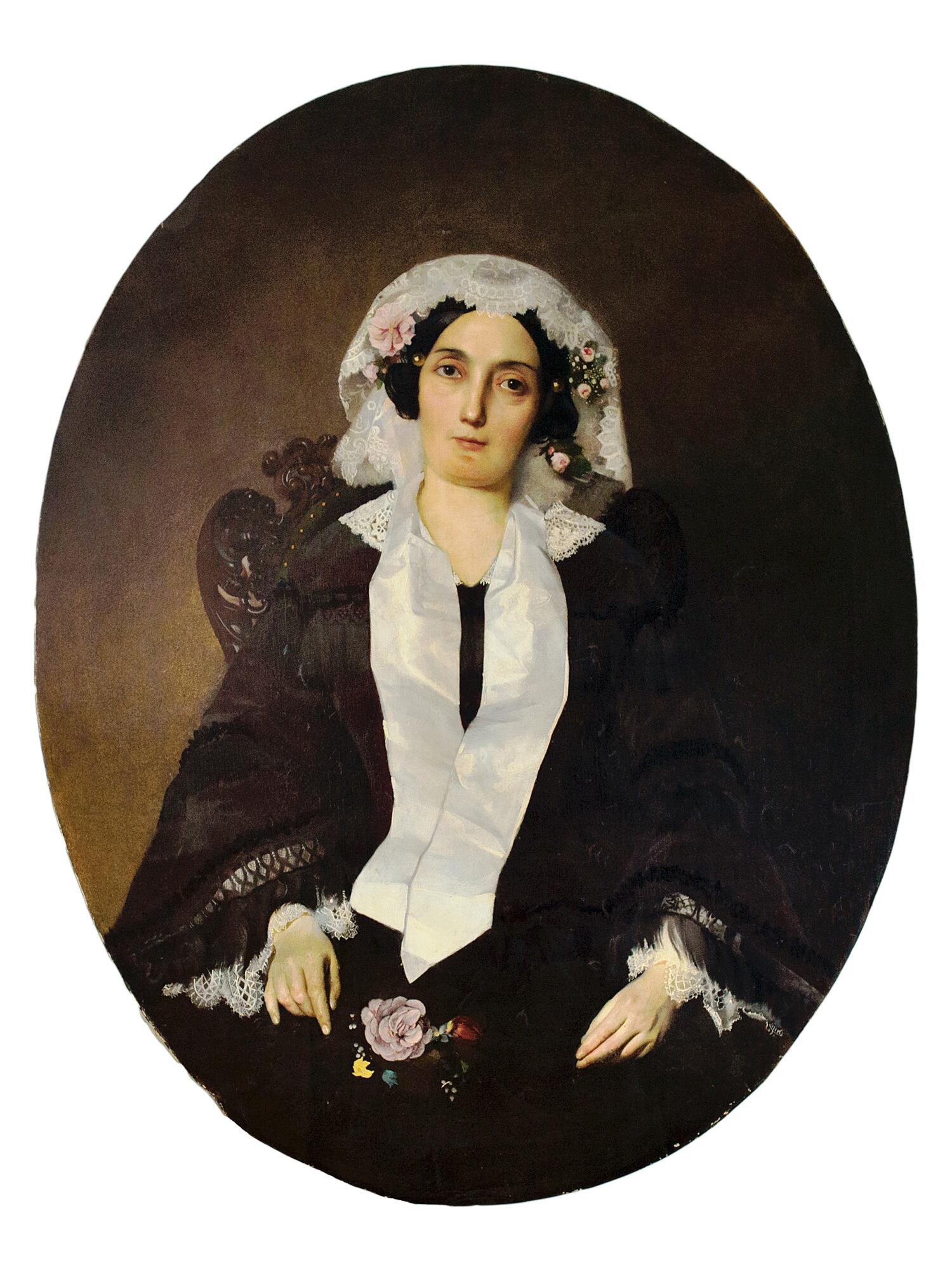The displayed portrait is described in the museum documentation as a portrait of an unknown woman by an unknown artist. It dates back to around the mid-19th century. This painting may have been acquired by Sergey Nikolayevich Sergeyev-Tsensky at one of the dachas (summer houses) in the Professorsky ugolok suburb (Professors’ Corner) on the Black Sea coast.
At the turn of the 20th century, dacha owners strove to decorate their residences with rare and unique objects because they were visited by the Russian scientific and art elites. In the early 1920s, when the owners were selling off pieces of decorative art, Sergeyev-Tsensky purchased furniture and paintings for his dacha in Alushta.
According to what Sergeyev-Tsensky said, the portrait might depict Princess Nino Chavchavadze, the wife of Alexander Griboyedov, and could have been painted by Sergey Konstantinovich Zaryanko — a Russian painter, representative of the Venetian school and one of the greatest realist portraitists of the mid-19th century.
The 19th-century Russian Empire enjoyed the presence of such masters as Nikolai Ge, Vasily Perov, Ivan Kramskoy, Nikolai Yaroshenko, Ilya Repin, Viktor Vasnetsov, and Vasily Surikov, all working around the same time. Never before had there been so many portraits of outstanding progressive representatives of the epoch as during that period. Each of those portraits bears an influence of a historical epoch and features clear national characteristics.
Sergey Sergeyev-Tsensky read a lot of classic books. Viktor Kozlov and F. Putnin’s article “The Creative Journey of Sergeyev-Tsensky” reads,

